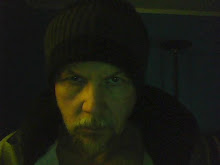Just now, I read the last page of Kurt Vonnegut’s strange
and depressing novel, Deadeye Dick.
The characters are all very real, in that not one of them has at his or her
core any essentially redeeming quality. Unless, that is, one is able to see a
futile and ephemeral existence, in itself, as a redeeming quality. This
morning, anyway, I cannot.
I characterize the novel as depressing largely because I
recognize myself in it. I am depressing—to me anyway. I noted a couple of
passages from the novel which illustrate what I’m talking about here:
p. 208 We all see our lives as stories, it seems
to me, and I am convinced that psychologists and sociologists and historians
and so on would find it useful to acknowledge that. If a person survives an
ordinary span of sixty years or more, there is every chance that his or her
life as a shapely story has ended, and all that remains to be experienced is
epilogue. Life is not over, but the story is.
[…]
p. 209 This could be true of nations, too. Nations
might think of themselves as stories, and the stories end, but life goes on.
Maybe my own country’s life as a story ended after the Second World War, when
it was the richest and most powerful nation on earth, when it was going to
ensure peace and justice everywhere, since it alone had the atom bomb.
Deadeye Dick was
published in 1982. And, like Vonnegut’s
earlier novels, it treats of shadowy evils that give rise to various national
paranoias, which, seemingly, only small clusters of Americans seem to notice or
fret about at any given time.
A plot element in Deadeye
Dick is that the narrator’s hometown is mysteriously destroyed by a neutron
bomb. The official story is that this was an accident that occurred when a bomb
being trucked from some unknown Point A to an unnamed Point B was somehow
triggered as it passed through the fictional Midland City, Ohio.
This official version of the total destruction of the
citizens of Midland City is accepted as gospel by almost everybody. There is a
small organization of activist farmers from Southwestern Ohio, who aren’t
buying the government’s explanation of the tragedy. This group is passing out
leaflets near the perimeter of the blast zone, the gist of the message of which
is:
p. 231 …that the United States of America was now
ruled, evidently, by a small clique of power brokers who believed that most
Americans were so boring and ungifted and small time that they could be slain
by the tens of thousands without inspiring any long-term regrets on the part of
anyone.
And there you have Vonnegut’s prescient description of the paranoiac
musings of the “Truthers” with regard to the destruction of the World Trade
Center and the lives of several thousand Americans working in the buildings
that fell.
And there is more: Midland City, the buildings of which are
all still standing, for that is how the neutron bomb is designed to work, is
now surrounded by barbed wire, mine fields, and fences—a stockade patrolled by
the military and off-limits to all citizens, unless accompanied by soldiers.
The rumor is that the city will be used as a dwelling place for refugees from
Haiti and other such depressed nations. One of the pamphlet-distributing
farmers expresses this opinion:
p. 233-234 “They aim to bring slavery back… They never
gave up on it… These slaves aren’t going to be Americans. They’re going to come
by the boatload from Haiti and Jamaica and places like that… Do you honestly
believe that fence is ever coming down?”
These passages immediately brought to my mind currently circulating
speculations about the fenced and very hush-hush “FEMA Camps” supposedly being
constructed across the U.S. What also
comes to mind is the very obvious militarization of the municipal police forces
(think Watertown, MA during the dragnet following the Boston Marathon incident)
and the huge amounts of ammunition being bought up by federal authorities, but
not being sent to the war zones.
The farmer, when questioned about just who these people are,
says that they have no name:
“They don’t want us
to know their name, so they don’t have a name. You can’t fight back against
something that don’t have a name.”
And so it goes.
